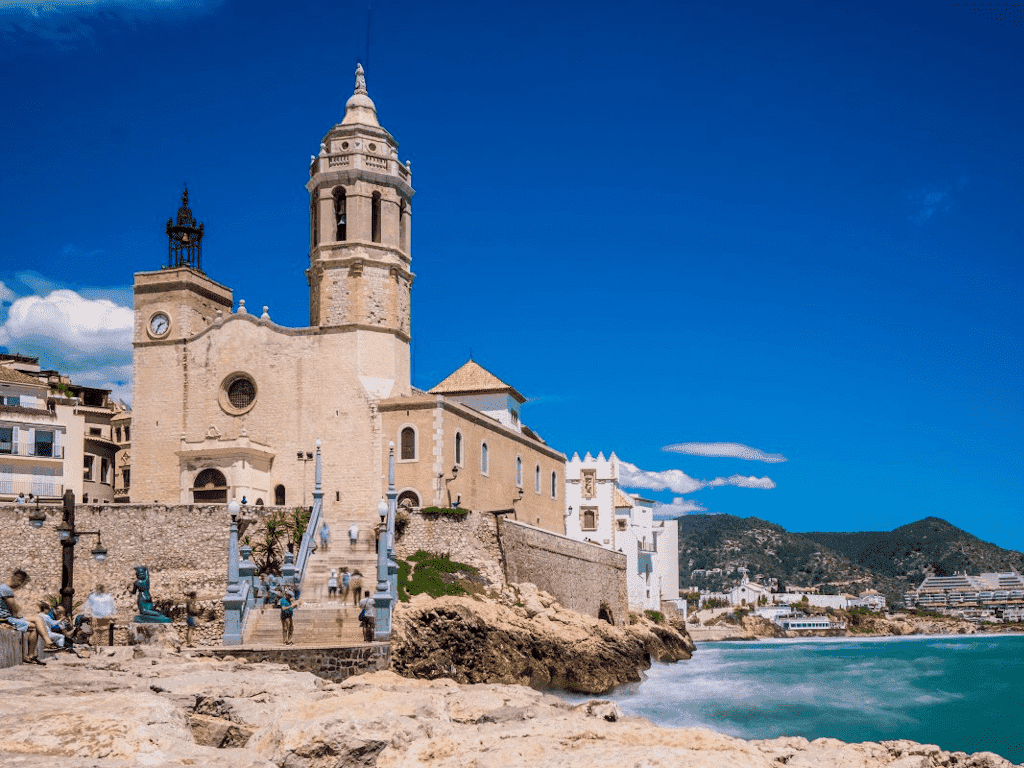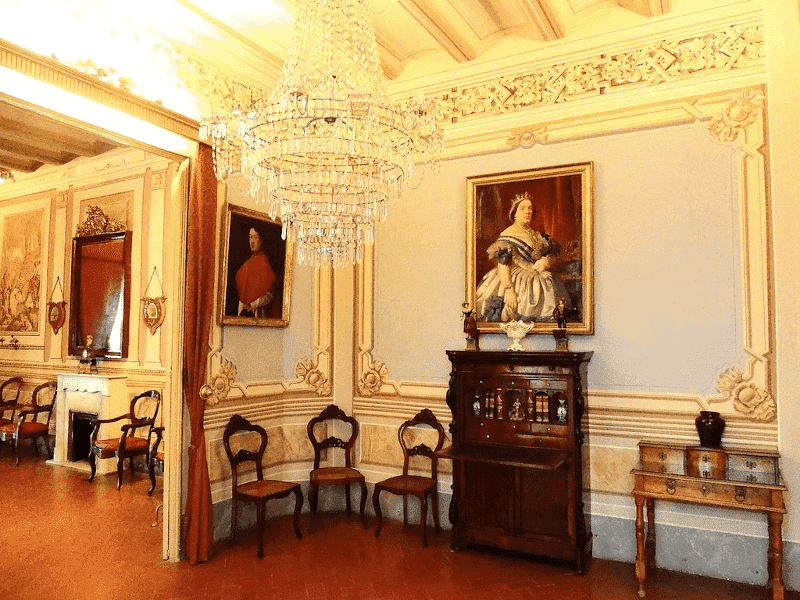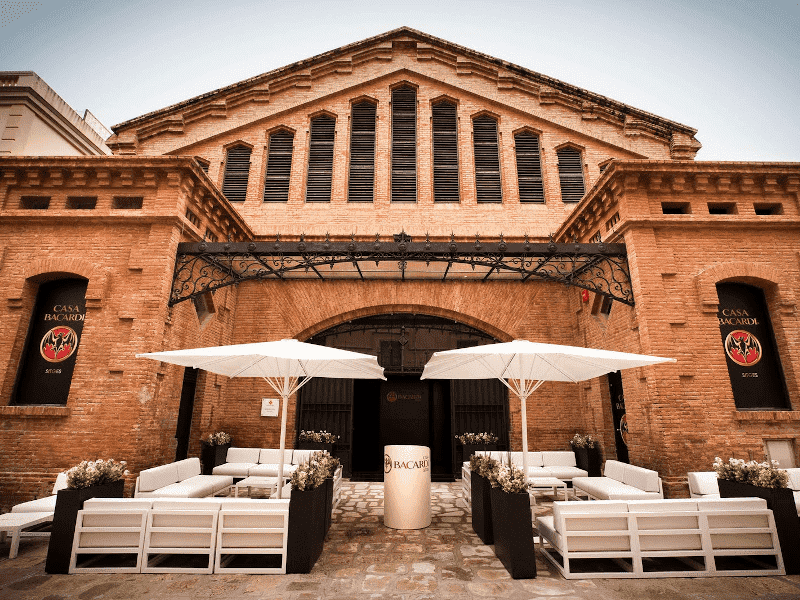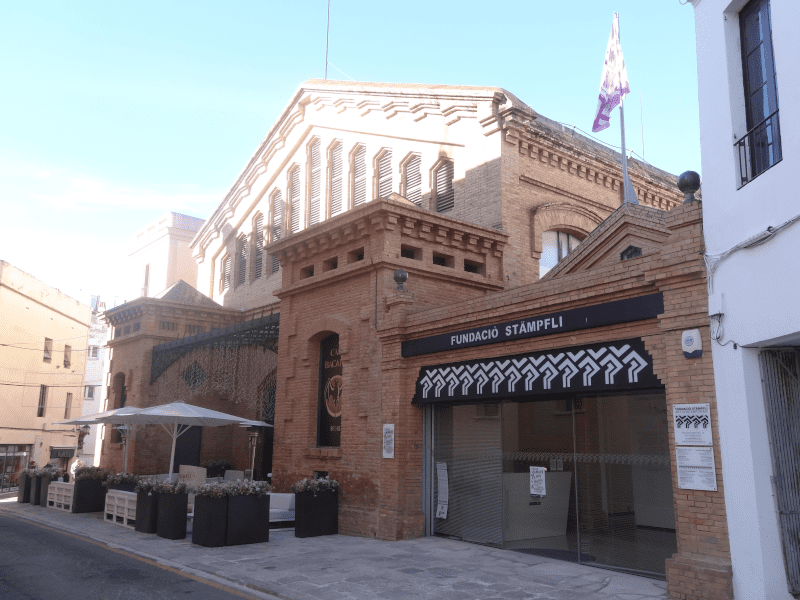
Culture in Sitges
Sitges has a very varied culture and one of the best ways to explore and discover that culture is by visiting some of its best museums or galleries. You will discover the classic and contemporary art of the area and know the local traditions and clothes of Sitges.
Maricel Museum
The Maricel Museum is a museum located in the center of Sitges, next to the Maricel Palace, specifically on Fonollar Street, on the seafront.
The Maricel Museum shows a complete artistic itinerary from the 10th century to the realism and figuration of the first half of the 20th century through the art collections of Dr. Jesús Pérez-Rosales and the Villa de Sitges, with great works quality. The museological presentation integrates various languages, techniques and artistic supports in order to achieve maximum coherence in the chronological sequence of the evolution of the arts.

Cau Ferrat Museum
The Cau Ferrat Museum was founded in 1893 by artist Santiago Rusiñol as a workshop-house and became a public museum in 1933, preserving the artistic spirit granted by its founder. It contains collections of ancient art gathered by the artist (painting, wrought iron, ceramics, glass, archeology, sculpture and furniture) as well as modern art (painting, drawing, sculpture) with works by Rusiñol, Casas, Picasso, R. Pichot, Mas i Fontdevila, Zuloaga, Regoyos and Degouwe de Nucques, Enric Clarasó, Manolo Hugué, Pau Gargallo among others.

Romantic Museum
The Romantic Museum, Can Llopis, is located in a neoclassical building built in 1793. Its name is due to the first owner, the notary Manuel Llopis i Falç that was bought from his cousin, Josep Bonaventura Falç i Roger, who created the construction within the perimeter of land that was urbanized outside the walls of the town, in which it was the first widening of Sitgetano, an end of the 18th century.
The last heir of the family, the diplomat Manuel Llopis Casades ceded this manor house to the Generalitat de Catalunya to turn it into a museum. The outbreak and the consequences of the Civil War delayed the procedures that were resumed in 1943 by offering the new building to the Diputación de Barcelona.
The adaptation as a museum began in 1946. In 1949 the noble floor was opened to the public and later, the ground floor, the garden, the cellar and the library. The structure and decoration of the walls are completely preserved from the original house. The noble floor is decorated with paintings by Pau Rigalt, as is the attached gallery and the garden porches. The second floor houses the Lola Anglada Doll Collection since 1961.
The museum shows how people lived in the traffic from the 18th to the 19th century. The interior decoration shows the attention of every detail and every corner of romanticism.

Bacardí Museum
The most famous rum brand in the world, a part of the culture in Sitges, has a permanent exhibition open to the public in the Catalan town of Sitges that invites you to know the history of the brand through direct experience. This is Casa Bacardí, a space that allows you to enter a part of the history of Sitges and its link with the Bacardí family, the production process of the famous rum and the preparation of the original cocktails. Located in the Historic Mercat Vell de Sitges, a beautiful modernist building built in 1890.
The exhibition has a first space called “Heritage”, which is where the visitor is welcomed and the ties between the brand and the town are explained. Here the story of the Indians, Sitgetans who from the end of the eighteenth century and until the first third of the twentieth century emigrated to Cuba and Puerto Rico in search of fortune, and when they returned to the town built large mansions by modernist and novecentista architects . One of these sitgetanos that marched in search of fortune on the other side of the ocean was precisely Facundo Bacardí.

The Raywal Museum of Catalonia
The Railway Museum is an institution dedicated to promoting the knowledge and dissemination of the railway that is located in the town of Vilanova and La Geltrú, right next to the train station.
The museum is located in an old steam locomotive depot, whose oldest building dates back to 1881, the year in which the railway connection between Vilanova and La Geltrú with the city of Barcelona was inaugurated. The production center functioned as a base and repair shop for locomotives until 1967, when it was closed. The space was abandoned, being used exclusively to deposit the old steam locomotives as they retired. In 1972 the Association of Friends of the Railroad of Barcelona was the institution in charge of holding the XIX Congress of the European Union of Railway Modelists and Friends of the Railroad (MOROP). For this, it was thought to use the old abandoned facilities of the Villanueva deposit to carry out a wide exposure of steam locomotives, since the enclosure had a fabulous roundabout with 12 covered tracks, a rotating bridge and a series of water tanks.

The Stämpfli Foundation
The Stämpfli Foundation is a contemporary art museum opened in 2011 in the old Mercat del Peix, in Sitges.
The Stämpfli Foundation brings together one of the most relevant contemporary art collections in Catalonia. Promoted by Pere and Anna Maria Stämpfli, the Foundation exhibits in its facilities, located in the Pl. De l’Ajuntament de Sitges, a selection of its fund, consisting of 90 works by 60 artists of 22 nationalities.
The current exhibition of the Foundation presents 36 works from its collection, structured in four different areas: narrative figuration, abstraction, the particular universes of different artists, and, the works that emphasize their numerical and quantity notions. The selection and distribution is directed by Serge Lemoine.

There is a lot of culture in Sitges, incluiding museums, art galleries and foundations. Discover it now!